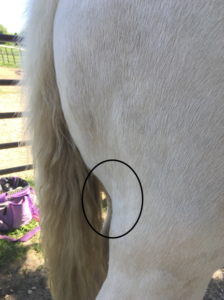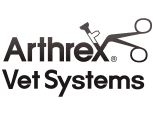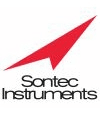Fibrotic myopathy is a musculoskeletal disorder characterized by the abnormal deposition of fibrous tissue within the muscle, typically affecting the hamstring muscles of the hind limbs. This fibrosis, or scarring, results in muscle contracture, reduced flexibility, and impaired function, leading to gait abnormality. Fibrotic myopathy may occur unilaterally (affecting one hind limb) or bilaterally (affecting both hind limbs). Typically, pain is not associated with this condition, but the scar tissue can result in characteristic gait abnormalities and can be performance-limiting.

Horses with fibrotic myopathy often exhibit a mechanical lameness or gait abnormality of the affected hindlimb(s). The classic gait abnormality occurs at the most forward part of the swing phase and causes the limb to come backwards just before the hoof contacts the ground, causing a characteristic ‘slapping’ motion with the hoof. This gait abnormality tends to be most prominent at the walk. The exact gait abnormality may vary depending on the severity of scarring and exact muscles involved. Muscle atrophy (loss) or dimpling due to scar tissue may be apparent (Figure 1). Most often this develops secondary to trauma or injury to the hamstring muscles.
The characteristic gait and muscle palpation makes fibrotic myopathy able to be diagnosed based on clinical signs alone in most cases. However, radiography and/or ultrasound of the area may provide more information about the muscles involved and rule out additional injury.
For many cases, no treatment is required; however, if the gait abnormality is severe or hindering the horse’s performance, treatment may be warranted. Therapeutic options include:
Conservative Management: Conservative approaches to managing fibrotic myopathy may include rest, controlled exercise, physical therapy, massage, stretching exercises, and non-steroidal anti-inflammatory drugs (NSAIDs) to reduce pain and inflammation. These modalities help improve muscle flexibility and range of motion.
Extracorporeal Shockwave Therapy (ESWT): Extracorporeal shockwave therapy may be used to promote tissue healing, reduce fibrosis, and improve muscle function in horses with fibrotic myopathy. Shockwave therapy delivers high-energy acoustic waves to targeted areas of the affected muscles, stimulating cellular repair mechanisms and enhancing tissue regeneration.
Surgical Intervention: In cases of severe or refractory fibrotic myopathy, surgical intervention may be considered to release fibrous adhesions, improve muscle length, and restore joint mobility. Surgical techniques such as myotenotomy (surgical release of muscle fibers), fasciotomy (release of fibrous tissue), or tenotomy (surgical division of tendons) may be performed to address contracture and improve muscle function.
Rehabilitation and Conditioning: Following conservative or surgical treatment, rehabilitation and conditioning programs tailored to the individual horse’s needs can help restore muscle strength, flexibility, and function, facilitating a gradual return to work and optimizing long-term musculoskeletal health and performance.
The prognosis for horses with fibrotic myopathy depends on various factors, including the severity and chronicity of the condition, the horse’s response to treatment, and the overall goals and expectations. The gait abnormalities seen with fibrotic myopathy are largely mechanical, and typically pain is not appreciated once fibrosis is present. Horses can live long comfortable lives without specific treatment, but treatment may be elected if the gait abnormality is severe, pain is appreciated, or the gait is affecting the horses performance. Success of treatment will depend on the muscles involved and severity of fibrosis.













